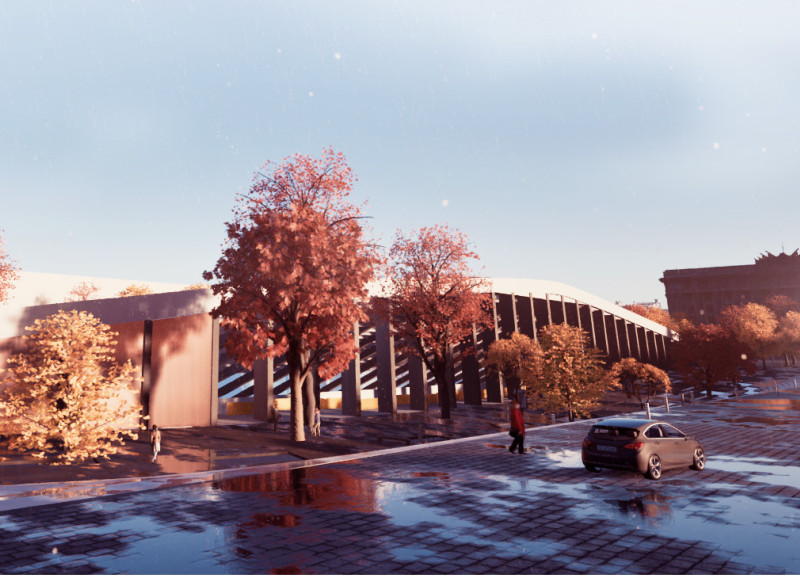5 key facts about this project
The architectural layout reflects thoughtful zoning of spaces, accommodating various activities such as recreational programs, educational workshops, and community meetings. Each area is intentionally designed to cater to the diverse needs of the community, ensuring accessibility and versatility. The heart of the building features an open-plan multipurpose hall adorned with large windows, allowing natural light to permeate the space. This intentional design decision fosters an environment conducive to both quiet reflection and collaborative activities, marrying functionality with a warm, welcoming atmosphere.
Materiality plays a significant role in the project’s identity, with an emphasis on both local sourcing and sustainable resources. The primary materials include reclaimed timber, which is utilized for structural elements and cladding, showcasing the natural beauty of wood while minimizing environmental impact. In addition to timber, the exterior incorporates low-maintenance metal cladding that complements the surrounding landscape. This choice not only enhances durability but also harmonizes with the local architectural vernacular. The roof structure features photovoltaic panels, underlining the project’s commitment to renewable energy and reducing its carbon footprint.
Unique design approaches are evident throughout the project, not only in its material selection but also in its integration with the natural environment. Landscaping plays a crucial role, with native plants used to create an inviting approach to the entrance, further blending the building with its surroundings. The landscape design also strategically includes outdoor gathering spaces, providing extensions of the indoor functions that encourage connectivity among community members. Rain gardens are incorporated to manage stormwater sustainably, enhancing the project’s ecological footprint.
Incorporating thermal mass elements into the design allows for energy-efficient climate control while promoting comfort throughout the year. Large overhangs are employed to shield windows from harsh sunlight, reducing the dependency on artificial cooling systems and contributing to the overall energy efficiency of the building. These passive design strategies highlight the project’s response to its climatic context, thereby enriching the users’ experience and contributing to a sustainable architectural outcome.
In terms of architectural forms, the project avoids conventional rigidity, favoring a more dynamic silhouette that reflects movement and flow. These forms are not only visually appealing but also serve functional purposes, enhancing spatial organization within the building. This attention to detail ensures an engaging experience as visitors navigate through different zones, promoting exploration and interaction.
The architectural design showcases a harmonious balance between modern aesthetics and contextual relevance, making it a noteworthy addition to the community. Through the careful consideration of user needs, environmental impact, and aesthetic appeal, the project stands as a testament to contemporary architectural practices that prioritize sustainability and community engagement.
For those interested in delving deeper into the specifics of the design, including architectural plans, architectural sections, and architectural ideas, further exploration of the project presentation is encouraged to fully appreciate the nuances and thoughtful details that shape this significant architecture.


 Dor Ben-arosh
Dor Ben-arosh 























